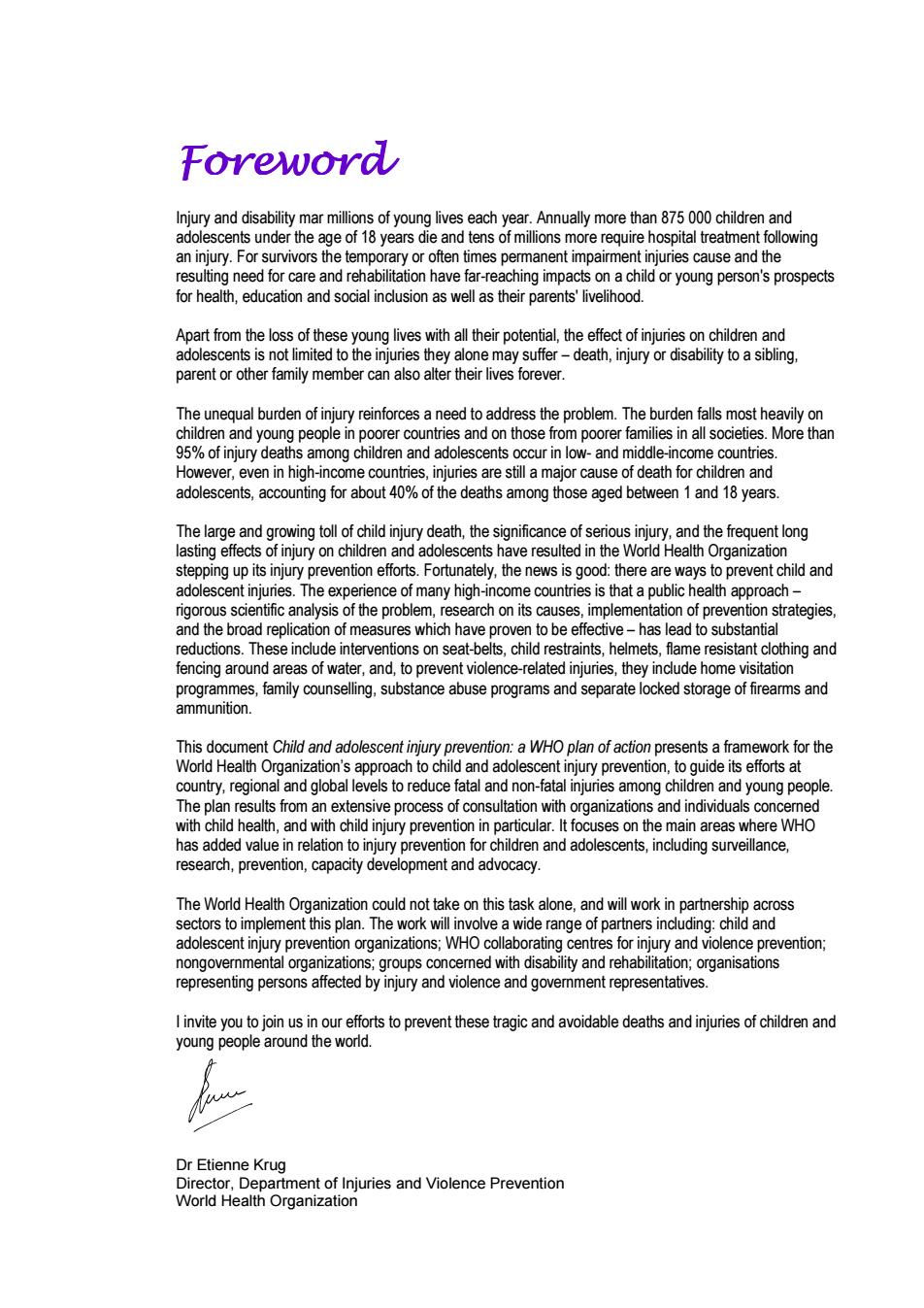正在加载图片...

Foreword Injury and disability mar millions of young lives each year.Annually more than 875 000 children and adolescents under the age of 18 years die and tens of millions more require hospital treatment following an injury.For survivors the temporary or often times permanent impairment injuries cause and the resulting need for care and rehabilitation have far-reaching impacts on a child or young person's prospects for health,education and social inclusion as well as their parents'livelihood. Apart from the loss of these young lives with all their potential,the effect of injuries on children and adolescents is not limited to the injuries they alone may suffer-death,injury or disability to a sibling, parent or other family member can also alter their lives forever. The unequal burden of injury reinforces a need to address the problem.The burden falls most heavily on children and young people in poorer countries and on those from poorer families in all societies.More than 95%of injury deaths among children and adolescents occur in low-and middle-income countries. However,even in high-income countries,injuries are still a major cause of death for children and adolescents,accounting for about 40%of the deaths among those aged between 1 and 18 years The large and growing toll of child injury death,the significance of serious injury,and the frequent long lasting effects of injury on children and adolescents have resulted in the World Health Organization stepping up its injury prevention efforts.Fortunately,the news is good:there are ways to prevent child and adolescent injuries.The experience of many high-income countries is that a public health approach- rigorous scientific analysis of the problem,research on its causes,implementation of prevention strategies, and the broad replication of measures which have proven to be effective-has lead to substantial reductions.These include interventions on seat-belts,child restraints,helmets,flame resistant clothing and fencing around areas of water,and,to prevent violence-related injuries,they include home visitation programmes,family counselling,substance abuse programs and separate locked storage of firearms and ammunition. This document Child and adolescent injury prevention:a WHO plan of action presents a framework for the World Health Organization's approach to child and adolescent injury prevention,to guide its efforts at country,regional and global levels to reduce fatal and non-fatal injuries among children and young people. The plan results from an extensive process of consultation with organizations and individuals concerned with child health,and with child injury prevention in particular.It focuses on the main areas where WHO has added value in relation to injury prevention for children and adolescents,including surveillance, research,prevention,capacity development and advocacy. The World Health Organization could not take on this task alone,and will work in partnership across sectors to implement this plan.The work will involve a wide range of partners including:child and adolescent injury prevention organizations;WHO collaborating centres for injury and violence prevention; nongovernmental organizations;groups concerned with disability and rehabilitation;organisations representing persons affected by injury and violence and govemment representatives. I invite you to join us in our efforts to prevent these tragic and avoidable deaths and injuries of children and young people around the world. Dr Etienne Krug Director,Department of Injuries and Violence Prevention World Health Organization 6
)
BC!
B
%
) :
D
D )
E
) %
)
)
F! G
) #
H G
B
)
%
" #
$
(
) :
+
) A
E
E
)
5
)
5
" #
$
(
I
)
A
(
) 6
" # $
) " #
$
(
5
5
5
) 5
+
(
0 " # $
0
(
0
0
) 6
)
������������������������������������������������������������������������������������������������������������������������������������